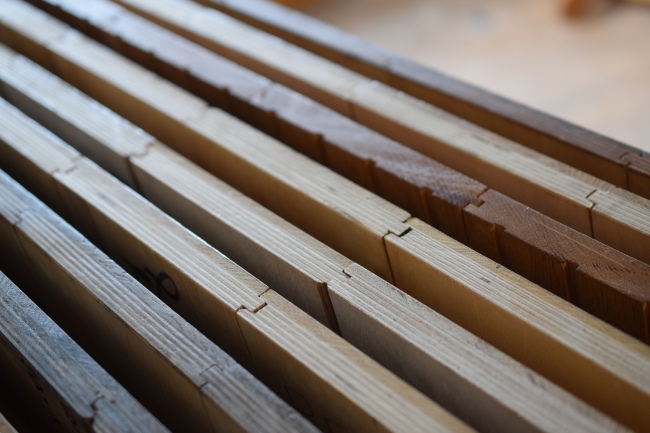Is Engineered Oak Flooring Good?
15th Aug 2022
Engineered oak flooring, a term used to describe a vast range of products on the oak flooring market, a term however that is often misconstrued. So is engineered oak flooring any good? To answer it is important to know exactly what it is...
Solid oak flooring is exactly what it sounds like, a full board consisting of nothing but solid oak - from top to bottom. These boards often, but not always, incorporate a tongue and groove system for ease of fitting as well as stress grooves to help cope with moisture changes.
Engineered oak flooring are manufactured boards consisting of a top layer of solid oak, bonded to a wooden base (such as plyboard). The term "engineered wood" is often mistaken for laminate – but this is not the case. Laminate is a printed plastic top flooring which is bonded to a ply or fibreboard backing. Again engineered boards often incorporate a tongue and groove or click system.
Once laid, equal quality solid oak boards and equal quality engineered oak boards are indistinguishable.

When purchasing engineered oak flooring the overall construction of the plank is one of the most important aspects to consider.
Lets start with the wear layer. The thicker the oak wear layer, the better the engineered oak board will be. A thicker wear layer allows the board to be sanded more often, if required, and therefore last longer.
As for the base, the thickness again is a point to consider. As well as the overall thickness, the amount of layers that make up this base is important. Engineered oak flooring is designed to be more stable than solid oak flooring (which we will get into later in this post) - therefore the more layers that make up the base, the greater the overall stability of the board.
Further to the number of layers, what is used to create the base should also be considered. Certain engineered flooring use the likes of poplar or eucalyptus plyboard as a base, whilst others use a birch plyboard base. The varying qualities of plyboard should always be considered. A poor quality plyboard will result in a poor quality engineered oak board.

Due to its construction, engineered oak flooring can be used in areas where a traditional solid oak plank would not be suitable. Laying a solid oak floor in an area with changeable humidity (such as kitchens and bathrooms) could result in movement in the planks. Engineered oak flooring is much less susceptible to these changes and therefore more suited to such environments.
Engineered oak flooring also comes with the added ability of being able to be laid over underfloor heating systems or concrete subfloors.
A tongue and grooved engineered oak floor can be fitted in all of the same ways (and more) as a tongue and grooved solid oak floor. Sufficiently thick engineered oak planks can be screwed or nailed into joists or battens. Always check the average length of the supplied planks - only long lengths can be fitted directly onto joists. Engineered boards can also be glued directly to the subfloor and even laid as a floating floor.
As engineered oak flooring consists of a top wear layer of solid oak, the same range of grades and colours as solid oak flooring are typically available. So whether you prefer the clean look of the prime grade or the more rustic grades - they are all available as engineered oak boards. The construction of these planks also allow for engineered boards to be commonly available in wider widths than solid oak.

In summary the main advantage of engineered oak flooring is the ability to lay an oak floor in ways and in areas where solid oak flooring would not be suitable - whilst still achieving the same look and feel.
If you would like to discuss engineered oak flooring further with us, give us a call on 01538 304584.




Add a comment